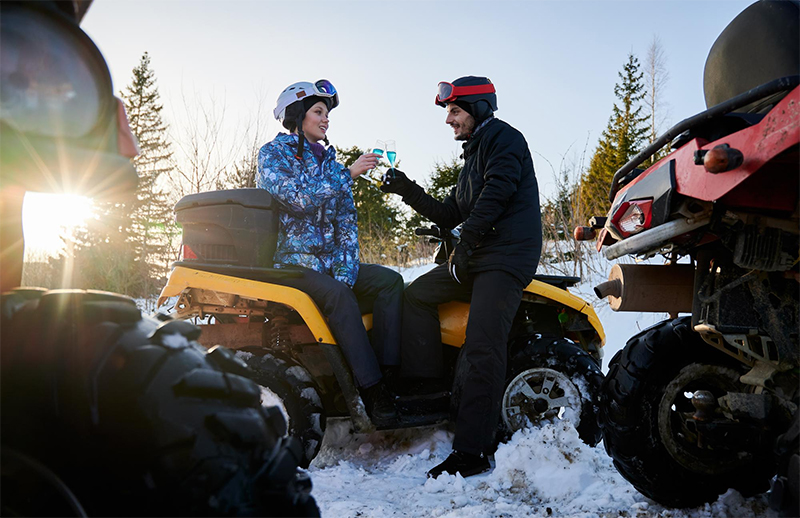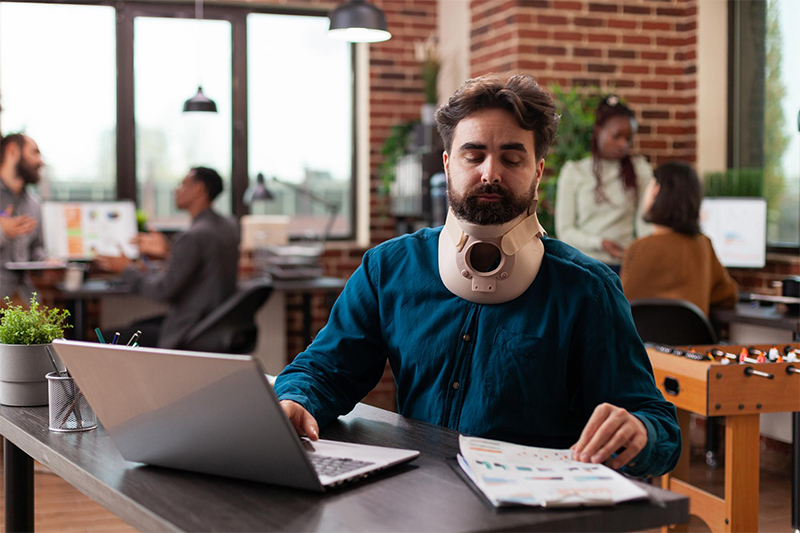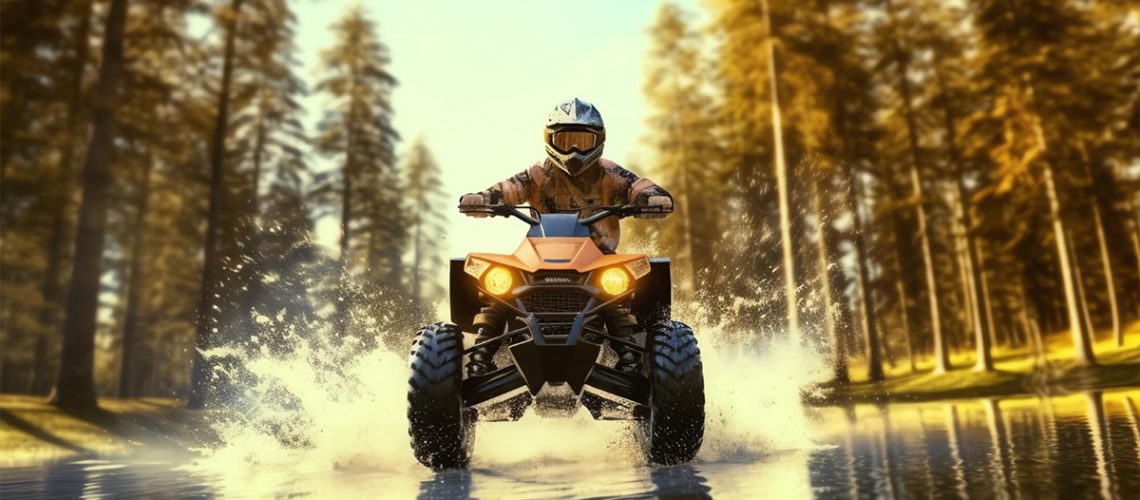An All-Terrain Vehicle (ATV), also known as a quad bike, is a motorized vehicle built to handle rough terrain. It is designed for various outdoor activities such as hunting, farming, and recreational use. They typically have four wheels and are powered by an engine that can be either electric or gas-powered.
The unique design of ATVs makes them ideal for use in remote and rugged areas where traditional vehicles may have difficulty navigating. ATVs are compact and easy to maneuver, allowing riders to access areas that might be otherwise off-limits.
There are different types and designs of ATVs that serve specific purposes. The recreational utility vehicle is the most widely used type, designed for off-road trails and racing. Other types include sports ATVs, utility ATVs, and kid ATVs.
While ATVs offer numerous advantages, there are also risks associated with their use.
ATVs accounted for nearly three-quarters of the deaths. Nearly 300 deaths were among children under the age of 16.
CPSC estimates that 112,300 injuries associated with off-highway vehicles (OHV) were treated in U.S. hospital emergency departments in 2020. Over five years, ATVs were the vehicle involved in 96 percent of OHV injuries. [1]
ATV accident injuries could be due to a lack of adult supervision (unsupervised children), drunk driving, operator error, or unexpected obstacles.
Before operating an ATV, it is essential to follow safety guidelines and regulations to ensure your safety and the safety of others.
ATV safety measures include wearing protective gear such as helmets, gloves, boots, and goggles, taking safety courses, and not operating the ATV under the influence of drugs or alcohol.

Risk Factors for ATV Accidents
All-terrain vehicles (ATVs) have surged in popularity recently, offering riders a thrilling and adventurous way to explore the outdoors.
With this increased popularity comes an alarming rise in ATV-related accidents. Every year, thousands of riders are injured or killed in these accidents, and in many cases, these incidents could have been prevented.
To ensure your safety while riding an ATV, it’s essential to understand the most common risk factors that contribute to accidents. Here are a few of the top risk factors to look out for:
- Inexperienced Operators
Perhaps the most common cause of ATV accidents is inexperienced operators. Operating an ATV requires skill and knowledge that many newcomers to the sport may not possess.
This can lead to riders losing control of the vehicle, not knowing how to handle tricky terrain, or not recognizing potential hazards.
- Reckless Driving
Reckless driving is another leading cause of ATV accidents. This includes engaging in dangerous behaviors such as speeding, performing stunts, and joyriding.
Engaging in these behaviors is more likely to cause accidents and can result in severe injuries like broken bones, spinal cord injuries, or traumatic brain injuries.
- Drug and Alcohol Use
Drug and alcohol use also plays a role in many ATV accidents. Being under the influence can impair judgment and slow reaction times, making it dangerous to operate a vehicle.

- Terrain and Environmental Factors
Terrain and environmental factors can also contribute to ATV accidents. High speeds and uneven or unfamiliar terrain can cause the ATV to flip, resulting in fatal accidents.
Always ensure you ride on designated ATV trails and avoid riding on public roads or paved surfaces. Sticking to designated trails and wearing proper safety gear can protect you from accident injuries caused by environmental factors.
Environmental factors can play a significant role in the safety of ATV riders. The terrain, weather, and wildlife are all potential hazards contributing to accidents. Muddy or slippery surfaces can make the ATV difficult to maneuver. Wet or windy conditions can reduce visibility and make it harder to stay balanced.
Wildlife, such as deer or other large animals, can also pose a threat to riders, especially when they appear suddenly on the trail. Riders need to be aware of these environmental factors and stay safe by wearing appropriate gear and adjusting their speed and technique based on the conditions.
- Safety Tips
A lack of protective gear can contribute significantly to ATV accidents. Riders who fail to wear helmets, goggles, gloves, and other protective gear are more likely to suffer from injuries or ATV-related deaths in the event of an accident.
Please always wear the appropriate protective gear and ensure it is in good condition before heading out on your ATV.
Understanding these risk factors can help you stay safe while riding your ATV. Exercise caution, follow safety guidelines, and be mindful of the risks associated with this thrilling sport.

Common Injuries Caused by ATV Accidents
All-terrain vehicles, or ATVs, are a beloved form of outdoor recreation that can be fun and exciting.
They do come with a certain level of danger, as accidents can and do happen. Many of these accidents result in serious injuries that can have long-lasting effects on both the rider and their loved ones.
A variety of injuries can occur due to an ATV accident, but some are more common than others. Here are a few of the most frequently reported injuries:
- Traumatic Brain Injuries
Traumatic brain injuries, or TBIs, are common injuries from ATV accidents. The force of an impact can cause the brain to move inside the skull, leading to concussions, bleeding, or bruising. These head injuries can range from mild to severe and have life-altering effects.
- Spinal Cord Injuries
Another severe injury often seen in ATV accidents is damage to the spinal cord. This can lead to partial or complete paralysis, loss of sensation, or difficulty with motor skills. Spinal cord injuries can require long-term medical treatment and rehabilitation.
- Broken Bones
One of the most common injuries from an ATV accident is bone fractures. The impact force from a collision or fall can cause bones to break, leading to pain, swelling, and difficulty moving the affected limb.
- Internal Injuries
Internal injuries can be tough to detect but are no less severe than other injuries. The force of an impact can cause damage to internal organs, leading to internal bleeding and damage that can require immediate medical attention.
- Neck Injuries
Whiplash, spinal fractures, and herniated discs are all potential neck injuries that can occur in an ATV accident. These types of injuries can have long-lasting physical and mental health effects.

Contact Lein Law Offices today at (715) 638-1103 if you or a loved one have been injured in an ATV, dirt bike, or UTV accident.
The experienced personal injury attorneys at Lein Law are dedicated to providing our clients with the highest quality legal representation.
Don’t wait; contact us today for a free consultation!
Source
[1] OHV & ATV Safety. (2023, May 23). U.S. Consumer Product Safety Commission. https://www.cpsc.gov/Safety-Education/Safety-Education-Centers/ATV-Safety-Information-Center


